Introduction
In today's highly competitive online marketplace, simply having an e-commerce store is not enough to drive sales. To stand out and attract customers, your online store needs to be optimized for search engines. This is where e-commerce SEO comes into play. By effectively optimizing your store, you can improve its visibility in search results, attract more targeted traffic, and ultimately increase sales. In this article, we'll explore actionable strategies for optimizing your e-commerce site to ensure it ranks higher on search engines and converts visitors into loyal customers. Whether you're new to SEO or looking to refine your existing strategy, these tips will help you achieve better results and grow your online business.
Understanding E-Commerce SEO
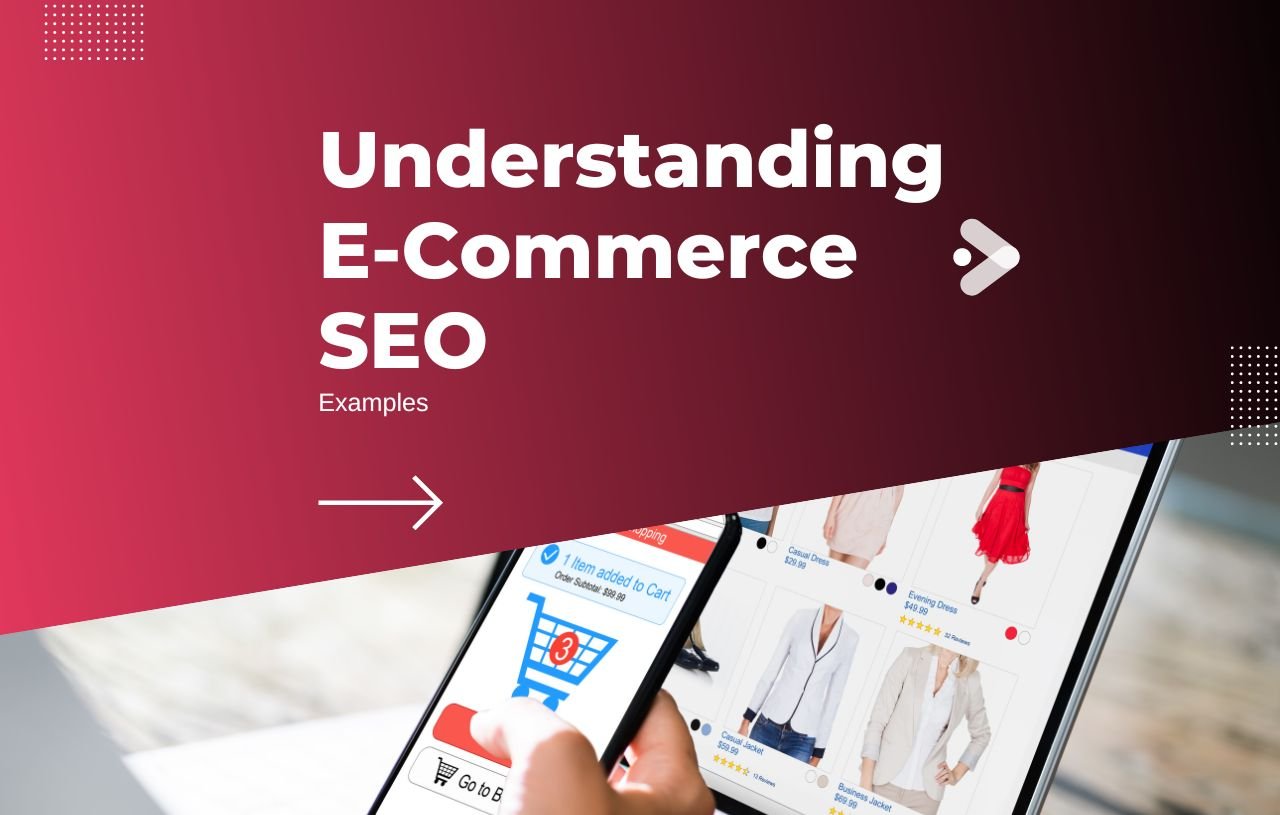
E-commerce SEO is the process of optimizing your online store to improve its visibility on search engine results pages (SERPs) when potential customers search for products you offer. Unlike traditional SEO, which might focus broadly on content and information-based searches, e-commerce SEO is specifically tailored to the needs of online retailers. It involves optimizing product pages, category pages, and the overall site structure to ensure that search engines understand what your site is about and rank it accordingly for relevant search queries.
One of the key differences between general SEO and e-commerce SEO is the focus on transactional keywords. While general SEO might target informational keywords, e-commerce SEO zeroes in on keywords that indicate a purchase intent, such as "buy running shoes online" or "best deals on smartphones." By understanding the search intent behind these queries, you can optimize your store to attract customers who are ready to make a purchase, rather than just browsing for information.
E-commerce SEO also places a strong emphasis on product and category pages. These pages are the backbone of any online store, and optimizing them for search engines involves more than just sprinkling in a few keywords. It requires well-structured content that provides value to both users and search engines. This includes unique product descriptions, high-quality images with optimized alt text, and clear, concise URLs that reflect the content of the page.
Example: Imagine you run an online store specializing in eco-friendly kitchenware. One of your top-selling products might be a set of bamboo cutting boards. To optimize the product page for SEO, you would start by targeting keywords with high commercial intent, such as "buy bamboo cutting board" or "eco-friendly cutting boards." Your product description should be detailed, explaining the benefits of bamboo as a sustainable material, how your cutting boards are made, and why they’re a superior choice compared to other materials. Additionally, you would include high-quality images of the cutting boards, with alt text like "eco-friendly bamboo cutting board set" to help search engines understand the image content. A well-structured URL like www.example.com/bamboo-cutting-boards would further enhance the page's SEO.
Another crucial aspect of e-commerce SEO is site structure. A well-organized site that’s easy to navigate not only enhances the user experience but also helps search engines crawl and index your pages more efficiently. This can lead to better rankings and increased visibility for your products. Whether it’s organizing your products into relevant categories or ensuring your navigation menu is intuitive, a good site structure is foundational to e-commerce SEO success.
In essence, e-commerce SEO is about making your online store more accessible and appealing to both search engines and users. By optimizing your site for the right keywords, creating high-quality content, and ensuring a user-friendly structure, you can significantly boost your store’s visibility in search results and attract more customers who are ready to buy.
Keyword Research for E-Commerce

Keyword research is the foundation of any successful e-commerce SEO strategy. In the context of an online store, keyword research involves identifying the specific words and phrases that potential customers use when searching for the products you offer. By targeting the right keywords, you can ensure that your products appear in front of the right audience, driving more qualified traffic to your site and increasing the likelihood of conversions.
Understanding the Types of Keywords
When conducting keyword research for an e-commerce site, it’s important to understand the different types of keywords you should target:
- Product Keywords: These are specific keywords related directly to the products you sell, such as "leather hiking boots" or "organic face cream." These keywords are often used by customers who know what they want and are ready to make a purchase.
- Category Keywords: These are broader keywords that relate to product categories, like "hiking gear" or "skincare products." These keywords are useful for attracting customers who are still exploring their options.
- Long-Tail Keywords: Long-tail keywords are more specific and usually consist of three or more words, such as "best leather hiking boots for women" or "natural organic face cream for sensitive skin." These keywords may have lower search volume but often come with higher intent, meaning users are closer to making a purchase.
- Buyer Intent Keywords: These are keywords that indicate a strong purchasing intent, such as "buy," "discount," "free shipping," or "best price." For example, "buy leather hiking boots online" or "best organic face cream deals" are buyer intent keywords.
Conducting Keyword Research
To identify the most effective keywords for your e-commerce site, follow these steps:
- Brainstorming: Start by brainstorming a list of potential keywords related to your products and categories. Think about the terms your customers might use when searching for the items you sell.
- Using Keyword Tools: Utilize keyword research tools like Google Keyword Planner, Ahrefs, SEMrush, or Moz Keyword Explorer to expand your list. These tools can provide insights into search volume, keyword difficulty, and competition. Look for keywords with a healthy search volume but relatively low competition to maximize your chances of ranking well.
- Analyzing Competitors: Check what keywords your competitors are ranking for. Tools like Ahrefs and SEMrush allow you to analyze competitors' websites and identify the keywords driving their traffic. This can help you discover keyword opportunities that you might have missed.
- Focusing on Long-Tail Keywords: While broad keywords may have higher search volumes, they are also more competitive. Long-tail keywords, on the other hand, often have less competition and are more likely to convert because they match the specific needs of the user. Incorporate these into your product descriptions, category pages, and blog content.
- Targeting Buyer Intent: Prioritize keywords that indicate strong buying intent. These keywords are particularly valuable in e-commerce because they attract users who are ready to make a purchase. For example, instead of just "leather hiking boots," you might target "buy leather hiking boots with free shipping."
Example: Suppose you run an online store that sells eco-friendly home goods. During your keyword research, you discover that "eco-friendly kitchen utensils" has a good search volume but high competition. However, a long-tail keyword like "best eco-friendly bamboo kitchen utensils set" has lower competition and reflects strong purchasing intent. By optimizing your product page for this long-tail keyword, you can attract customers who are specifically looking for this type of product and are more likely to make a purchase.
Implementing Keywords into Your Site:
Once you have identified your target keywords, the next step is to implement them throughout your website. This includes:
- Product Titles: Incorporate the primary keyword into the product title to improve visibility in search results.
- Meta Descriptions: Use your keywords in meta descriptions to attract clicks from search engine users.
- Product Descriptions: Ensure that your product descriptions are rich in relevant keywords but written naturally, providing valuable information to your customers.
- URLs: Include keywords in your URLs for better SEO performance and clarity.
- Category Pages: Optimize category pages with relevant keywords to rank for broader search terms.
Keyword research is a critical component of e-commerce SEO that helps you align your online store with what your potential customers are searching for. By understanding the different types of keywords, conducting thorough research, and strategically implementing those keywords across your site, you can improve your search engine rankings, attract more targeted traffic, and ultimately increase sales. Whether you’re just starting or looking to refine your keyword strategy, focusing on the right keywords will set the foundation for your e-commerce success.
On-Page Optimization for E-Commerce Sites
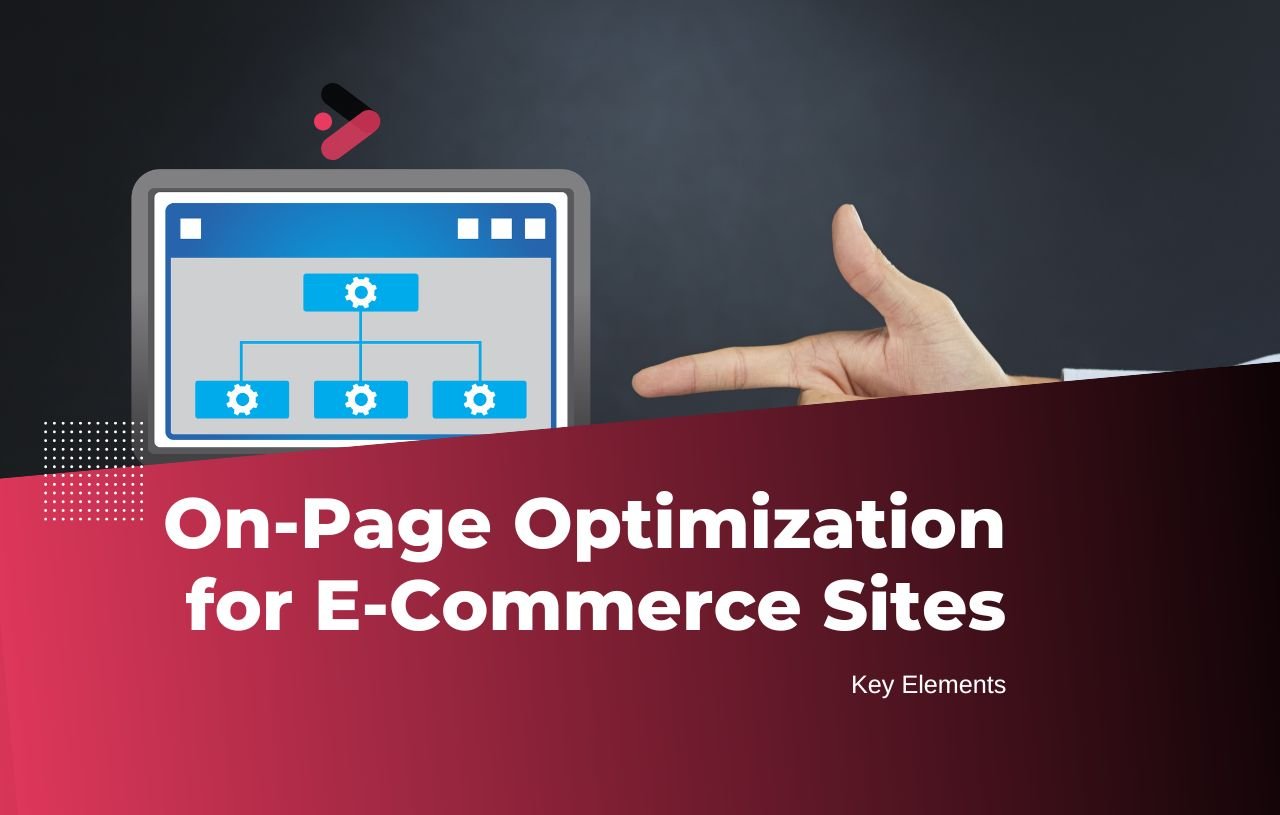
On-page optimization is a critical aspect of e-commerce SEO that involves refining the content and structure of individual pages on your site to make them more attractive to both search engines and users. For e-commerce websites, on-page SEO goes beyond simple keyword placement; it requires a strategic approach to optimize product pages, category pages, and other key elements that influence the buying decision. In this section, we’ll cover the essential components of on-page optimization for your e-commerce store.
Title Tags and Meta Descriptions
The title tag and meta description are two of the most important on-page elements for SEO. They appear in search engine results and play a significant role in determining whether users will click through to your site.
-
Title Tags: The title tag should be unique for each page and include your primary keyword, preferably near the beginning. For product pages, it’s a good idea to include the product name, brand (if applicable), and a key selling point, such as "Buy Eco-Friendly Bamboo Kitchen Utensils – Free Shipping." This structure not only improves your SEO but also entices users to click.
-
Meta Descriptions: The meta description should provide a concise summary of the page content while incorporating relevant keywords. Although meta descriptions don’t directly impact rankings, they are crucial for click-through rates. A compelling meta description might read, "Discover our eco-friendly bamboo kitchen utensils set, perfect for sustainable cooking. Order now and enjoy free shipping!"
Product Descriptions
Product descriptions are a vital part of on-page SEO for e-commerce sites. They should be more than just a list of features; they need to provide a compelling narrative that speaks to the needs and desires of your customers.
-
Unique Content: Avoid using manufacturer descriptions or duplicate content from other sites. Instead, write unique, detailed descriptions that highlight the benefits of the product and why it’s the best choice for your customers. Include your target keywords naturally within the text.
-
Keyword Integration: Incorporate your primary and secondary keywords into the product description, but do so in a way that feels organic and readable. For example, "Our eco-friendly bamboo kitchen utensils are perfect for environmentally-conscious cooks. Crafted from sustainable bamboo, this set includes all the tools you need for a green kitchen."
-
User Experience: Structure your product descriptions with short paragraphs, bullet points, and headings to make them easy to read. This not only enhances the user experience but also helps search engines crawl and understand your content.
Image Optimization
Images play a crucial role in e-commerce, but they also need to be optimized for SEO.
-
Alt Text: Use descriptive alt text for all images, including your target keywords. This helps search engines understand the content of your images, which is especially important for product images. For example, the alt text for an image of a bamboo utensil set might be "eco-friendly bamboo kitchen utensil set."
-
File Names: Rename your image files to include relevant keywords before uploading them to your site. Instead of using generic file names like "IMG1234.jpg," use something like "bamboo-kitchen-utensil-set.jpg."
-
Compression: Ensure that your images are optimized for web use by compressing them to reduce file size without sacrificing quality. Faster loading times improve user experience and are favored by search engines.
URL Structure
A clean and descriptive URL structure is essential for both SEO and user experience.
-
Keyword-Rich URLs: Include your primary keyword in the URL to improve search engine rankings and provide users with a clear idea of what the page is about. For instance, a URL like
www.example.com/bamboo-kitchen-utensilsis much more effective thanwww.example.com/product12345. -
Simplicity: Keep URLs short and straightforward. Avoid unnecessary numbers, special characters, and overly complex structures. Simple, keyword-rich URLs are easier for users to remember and share.
Internal Linking
Internal linking helps distribute page authority across your site and guides users to relevant content.
-
Strategic Linking: Link from product pages to related products, category pages, and blog posts. For example, a product page for bamboo kitchen utensils could link to a blog post on sustainable cooking tips or a category page featuring other eco-friendly kitchen products.
-
Anchor Text: Use descriptive anchor text that includes relevant keywords. Instead of using generic phrases like "click here," use specific text like "explore our full range of eco-friendly kitchenware."
-
Example: Imagine you’re optimizing a category page for "Sustainable Kitchen Products." You would include a keyword-rich title tag such as "Sustainable Kitchen Products – Eco-Friendly Cooking Essentials," and a meta description like "Shop our collection of sustainable kitchen products, including bamboo utensils, compostable bags, and more. Make your kitchen green today!" The product descriptions would be detailed, focusing on the benefits of each product, and include optimized images with descriptive alt text. The URL would be simple and keyword-rich, such as www.example.com/sustainable-kitchen-products, and you would link to related products and content to enhance user experience and SEO.
On-page optimization for e-commerce sites is about more than just adding keywords—it’s about creating a seamless, informative, and engaging experience for users while ensuring that search engines can easily understand and rank your content. By focusing on title tags, meta descriptions, product descriptions, image optimization, URL structure, and internal linking, you can significantly enhance your site’s visibility in search results and convert more visitors into customers. Implement these on-page SEO strategies to maximize the performance of your e-commerce store.
Technical SEO for E-Commerce
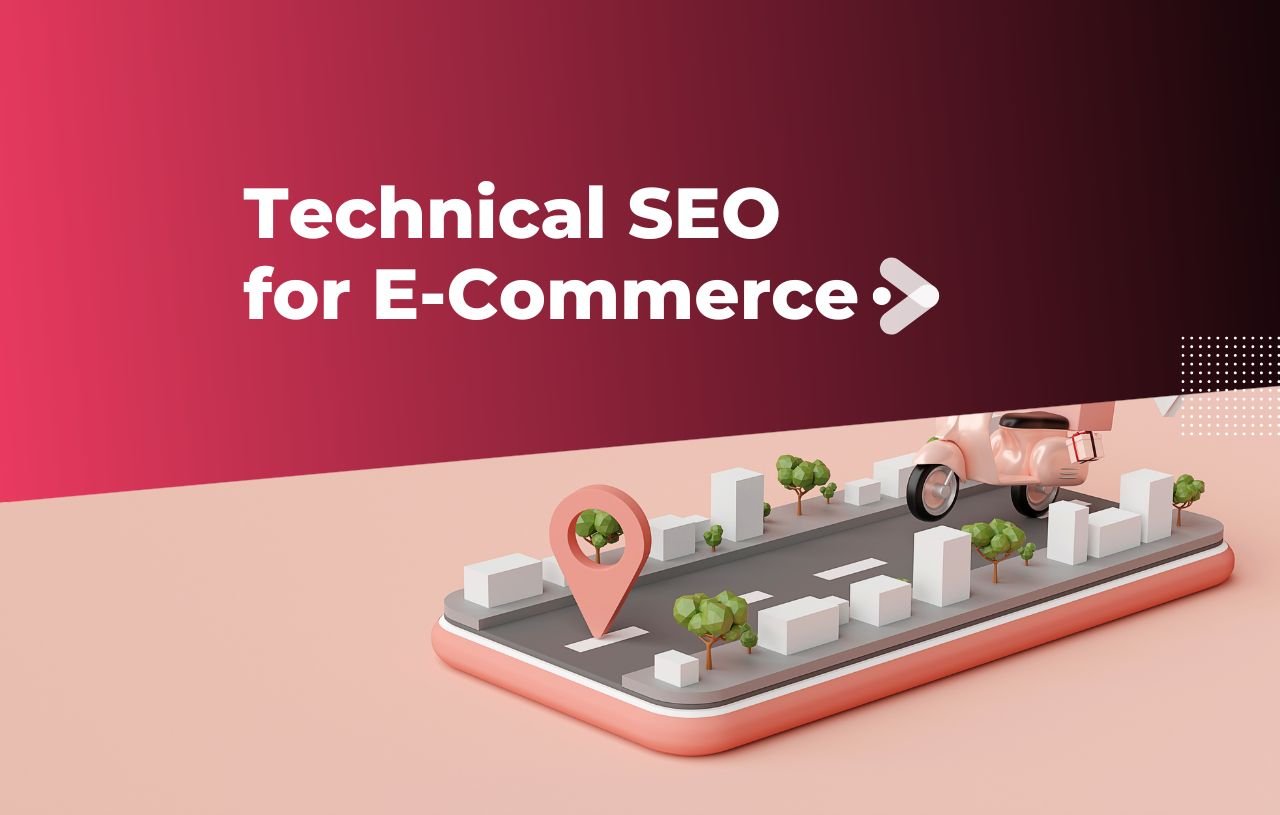
Technical SEO is the backbone of your e-commerce site’s search engine optimization strategy. It involves optimizing the technical aspects of your website to ensure that search engines can easily crawl, index, and rank your pages. Technical SEO not only helps improve your site’s visibility in search results but also enhances user experience, which is crucial for driving conversions. In this section, we’ll explore the key elements of technical SEO that are essential for any successful e-commerce site.
Site Speed Optimization
Site speed is a critical factor in both SEO and user experience. Slow-loading websites can frustrate users and lead to higher bounce rates, which can negatively impact your search rankings.
- Image Optimization: As mentioned earlier, compressing images is essential for reducing load times. Additionally, using modern image formats like WebP can further improve performance without compromising quality.
- Caching: Implement browser caching to store static files on users’ devices, reducing the need for these files to be downloaded every time they visit your site.
- Minification: Minify CSS, JavaScript, and HTML files to reduce their size and improve load times. This process removes unnecessary characters, such as spaces and comments, from your code.
- Content Delivery Network (CDN): Utilize a CDN to distribute your website’s content across multiple servers around the world. This ensures that users can load your site quickly, regardless of their geographic location.
Example: If your e-commerce site sells outdoor gear and includes high-resolution images of products, using a CDN can ensure that these images load quickly for users globally, improving both user experience and SEO.
Mobile Optimization
With the increasing number of shoppers using mobile devices, mobile optimization is no longer optional—it’s essential. Google’s mobile-first indexing means that the mobile version of your site is prioritized in search engine rankings.
- Responsive Design: Ensure your website is fully responsive, meaning it adjusts seamlessly to different screen sizes. This provides a consistent and user-friendly experience across all devices.
- Mobile-Friendly Navigation: Simplify navigation for mobile users by using dropdown menus, clear call-to-action buttons, and easy-to-read fonts.
- Touchscreen Compatibility: Optimize your site for touchscreen interactions by ensuring that buttons and links are large enough to be easily tapped and spaced far enough apart to avoid accidental clicks.
Example: Suppose your e-commerce site specializes in fashion. By implementing a responsive design, you ensure that product images, descriptions, and purchase options are easily accessible on smartphones, providing a smooth shopping experience that encourages mobile conversions.
Secure and Accessible Website
Website security and accessibility are fundamental to both user trust and SEO performance. Search engines prioritize secure sites, and users are more likely to trust and purchase from websites that protect their data.
- HTTPS Protocol: Ensure that your entire site is served over HTTPS, which encrypts data between the user and your site. This is particularly important for e-commerce sites handling sensitive information like payment details.
- SSL Certificates: Install an SSL certificate to authenticate your site’s identity and enable secure connections. This not only improves security but also positively impacts your SEO rankings.
- Accessibility: Make your website accessible to all users, including those with disabilities. This includes using alt text for images, ensuring that your site can be navigated using a keyboard, and providing transcripts for video content.
Example: An online store selling electronics should use HTTPS and an SSL certificate to secure transactions and build customer trust. Additionally, by making the site accessible to users with disabilities, you expand your potential customer base while adhering to best practices for technical SEO.
Structured Data Markup (Schema.org)
Structured data markup is a form of code that helps search engines understand the content of your pages more accurately. By implementing structured data, you can enhance your search listings with rich snippets, which provide additional information directly in the search results.
- Product Schema: Use product schema to provide search engines with detailed information about your products, such as price, availability, and reviews. This can result in rich snippets that display this information in search results, making your listings more attractive to potential customers.
- Breadcrumbs Schema: Implement breadcrumbs schema to help search engines understand the structure of your site and to improve navigation for users. Breadcrumbs appear in search results and show the path to a specific page, making it easier for users to navigate your site.
- Review Schema: Utilize review schema to highlight customer reviews and ratings in search results. Positive reviews displayed directly in search listings can increase click-through rates and build trust with potential customers.
Example: If your e-commerce site sells kitchen appliances, implementing product schema can result in search listings that display product prices, availability, and customer ratings. This additional information can help your product stand out in search results, attracting more clicks and potential sales.
XML Sitemap and Robots.txt
An XML sitemap and a properly configured robots.txt file are essential tools for helping search engines crawl and index your e-commerce site efficiently.
- XML Sitemap: Create and submit an XML sitemap to search engines. This file lists all the pages on your site, helping search engines discover and index your content. Make sure your sitemap is regularly updated as you add new products or content.
- Robots.txt: The robots.txt file tells search engines which pages they can and cannot crawl. Ensure that your robots.txt file is correctly configured to allow access to important pages while blocking irrelevant or duplicate content from being indexed.
Example: For a large e-commerce site with thousands of products, an XML sitemap ensures that all product pages are indexed by search engines, even if they are buried deep within the site’s structure. A well-configured robots.txt file ensures that search engines focus on the most important pages, improving crawl efficiency.
Technical e-commerce SEO is the foundation upon which your e-commerce SEO strategy is built. By optimizing your site speed, ensuring mobile compatibility, securing your website, implementing structured data, and maintaining an XML sitemap and robots.txt file, you create a robust technical framework that supports higher search rankings and a better user experience. As e-commerce competition continues to grow, mastering these technical aspects of SEO is crucial for staying ahead and driving more sales through your online store.
Content Marketing for E-Commerce SEO

Content marketing plays a vital role in e-commerce SEO, helping you attract, engage, and convert customers. By creating valuable, relevant, and optimized content, you can drive organic traffic to your site, improve your search engine rankings, and establish your brand as an authority in your industry. In this section, we’ll explore how to leverage content marketing to boost your e-commerce SEO and ultimately increase sales.
Blogging for E-Commerce SEO
Blogging is one of the most effective ways to generate organic traffic and improve your site’s e-commerce SEO. Regularly publishing blog posts allows you to target long-tail keywords, address customer pain points, and provide valuable information that can guide potential customers through the buying process.
- Keyword-Targeted Content: Use your keyword research to create blog posts that target specific search queries related to your products. For example, if you sell eco-friendly cleaning products, you might write a blog post titled "10 Benefits of Using Eco-Friendly Cleaning Products in Your Home." This allows you to target keywords like "eco-friendly cleaning products" and attract users who are interested in sustainable living.
- Informative and Engaging Topics: Focus on creating content that educates, informs, and engages your audience. Blog posts that answer common questions, offer tips and tricks, or provide how-to guides can position your brand as a helpful resource. This not only boosts SEO but also builds trust with potential customers.
- Internal Linking: Within your blog posts, link to relevant product pages, category pages, and other content on your site. This not only improves the user experience but also helps distribute page authority, enhancing the e-commerce SEO value of your entire site.
Example: If your e-commerce store sells fitness equipment, you could create a blog post titled "The Best Home Workout Equipment for Small Spaces." In this post, you could discuss the benefits of compact fitness equipment and link to product pages for items like foldable treadmills or adjustable dumbbells.
Product Guides and Tutorials
Creating detailed product guides and tutorials is another powerful way to leverage content marketing for e-commerce SEO. These types of content not only attract traffic but also help customers make informed purchasing decisions.
- Comprehensive Guides: Develop in-depth guides that cover everything a customer might need to know about a product or category. For example, a guide on "How to Choose the Right Mattress for Your Sleep Style" can help users navigate the buying process and make an informed choice. This type of content is likely to rank well for long-tail keywords and attract users with high purchase intent.
- Video Tutorials: Video content is becoming increasingly important for e-commerce SEO. Creating product tutorials, unboxing videos, or how-to guides can engage users and keep them on your site longer. Videos can also be optimized for search engines by including relevant keywords in the title, description, and tags.
- Content-Rich Product Pages: Enhance your product pages with additional content, such as detailed product descriptions, usage tips, and customer testimonials. This not only improves SEO but also provides more value to potential buyers.
Example: A beauty e-commerce site could create a video tutorial titled "How to Apply a Perfect Winged Eyeliner Using Our Precision Pen." The video could be embedded on the product page for the eyeliner and shared across social media platforms, driving traffic back to the site.
Customer Reviews and User-Generated Content
Customer reviews and user-generated content are invaluable for e-commerce SEO. Not only do they provide social proof that can influence purchasing decisions, but they also create fresh, unique content that search engines love.
- Encouraging Reviews: Actively encourage your customers to leave reviews on your product pages. Positive reviews can boost your rankings and increase conversions, while also providing additional content that includes keywords naturally used by customers.
- User-Generated Content Campaigns: Run campaigns that encourage customers to share photos or videos of themselves using your products. This content can be shared on your site and social media channels, providing authentic testimonials that enhance your e-commerce SEO and build community around your brand.
- Responding to Reviews: Engage with your customers by responding to reviews, both positive and negative. This shows that you value customer feedback and are committed to improving your products and services. Additionally, responses to reviews can include keywords and phrases that further optimize your product pages.
Example: An online clothing retailer could create a hashtag campaign encouraging customers to share photos of themselves wearing the brand’s clothing. These photos can then be featured on product pages or in a dedicated "Customer Gallery" section, adding valuable content and encouraging more customer engagement.
Content for Social Media Integration
While social media signals don’t directly impact search engine rankings, social media content can drive traffic to your site, enhance brand visibility, and indirectly support your e-commerce SEO efforts.
- Sharing Blog Content: Share your blog posts, guides, and tutorials on social media platforms to reach a broader audience. Engaging content on social media can drive traffic to your site, which can positively impact your e-commerce SEO.
- Promotions and Contests: Use social media to promote special offers, discounts, or contests. These promotions can attract new customers, increase brand awareness, and generate buzz around your products.
- Influencer Collaborations: Partner with influencers to create content that showcases your products. Influencers can drive significant traffic to your site, and the backlinks from their content can enhance your e-commerce SEO.
Example: A gourmet food e-commerce site might collaborate with a popular food blogger to create a recipe video featuring products from the site. The video could be shared on both the blogger’s and the brand’s social media channels, driving traffic to the site and encouraging viewers to purchase the featured products.
Content marketing is a powerful tool for e-commerce SEO that helps you connect with your audience, provide value, and drive traffic to your site. By creating keyword-targeted blog posts, in-depth product guides, engaging tutorials, and leveraging customer reviews and user-generated content, you can enhance your site’s visibility in search results and build a loyal customer base. Integrating social media into your content marketing strategy further amplifies your reach, helping you attract more potential customers and ultimately increase sales.
Off-Page SEO for E-Commerce
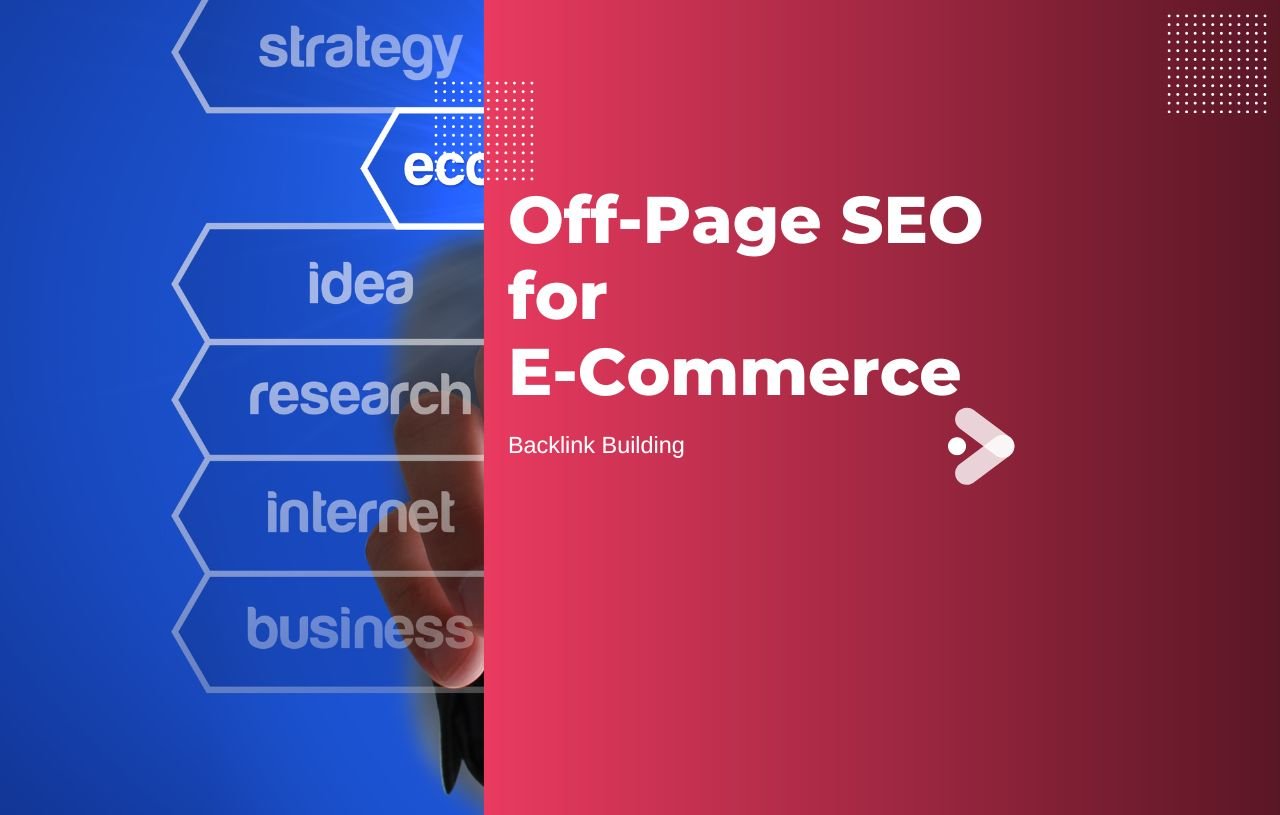
Off-page SEO is an essential component of a successful e-commerce SEO strategy. It focuses on activities that occur outside of your website but significantly influence your site's search engine rankings, reputation, and visibility. The primary goal of off-page SEO is to build your website’s authority, which helps improve its position in search results. In this section, we’ll explore key off-page SEO strategies that can help boost your e-commerce store’s rankings and drive more traffic.
Backlink Building for e-commerce
Backlinks—links from other websites to your site—are one of the most important ranking factors for search engines like Google. High-quality backlinks from authoritative sites signal to search engines that your site is trustworthy and relevant, which can improve your rankings.
- Guest Blogging: Writing guest posts for reputable blogs in your industry is a great way to build backlinks. In exchange for providing valuable content, you can include a link back to your site, driving both traffic and SEO value. For instance, if you sell outdoor gear, you might write a guest post on a popular hiking blog about "Top Gear Essentials for Your Next Adventure," including a link to your product pages.
- Influencer Partnerships: Collaborating with influencers in your niche can lead to valuable backlinks. Influencers often share content about the products they promote, and these posts typically include links to your site. For example, partnering with a popular food blogger to review your gourmet ingredients could result in a backlink from their highly trafficked site.
- Industry Directories and Listings: Submitting your site to relevant industry directories and listings can also help build backlinks. Make sure to choose directories that are reputable and specific to your niche, as these links are more valuable for SEO.
Example: An e-commerce site specializing in organic skincare products could collaborate with a beauty influencer to create a review of their top-selling items. The influencer’s blog post, which includes backlinks to the e-commerce site, not only drives traffic but also enhances the site’s authority in the eyes of search engines.
Social Media Integration
While social media links don’t directly impact SEO, social media can indirectly support your SEO efforts by driving traffic to your site, increasing brand awareness, and creating opportunities for backlinks.
- Sharing Content: Regularly share your blog posts, product updates, and special offers on social media platforms. Engaging content can attract likes, shares, and comments, which helps amplify your reach and drives more traffic to your website.
- Building Relationships: Use social media to engage with your audience, respond to comments, and build relationships. The more you engage, the more likely users are to share your content and link back to your site.
- Social Proof: Positive interactions on social media can serve as social proof, influencing potential customers to visit your site and make a purchase. Encourage satisfied customers to share their experiences with your products on social media.
Example: An online fashion retailer might run a social media campaign encouraging customers to post photos of themselves wearing the retailer’s clothing, using a branded hashtag. These posts can increase brand visibility, attract new customers, and generate buzz around the products, indirectly supporting SEO.
Local SEO for E-Commerce
If your e-commerce store has a physical presence or offers local services, local SEO is an important aspect of your off-page strategy. Local SEO helps you attract customers in your geographic area, improving your visibility in local search results.
- Google My Business: Claim and optimize your Google My Business listing to ensure your business appears in local searches and on Google Maps. Include accurate information, such as your address, phone number, hours of operation, and a link to your website. Encourage customers to leave reviews, as positive reviews can boost your local rankings.
- Local Directories: Submit your business information to local directories and listings, such as Yelp, Bing Places, and Apple Maps. Consistent information across these platforms can improve your local SEO performance.
- Localized Content: Create content that is tailored to your local audience. For example, write blog posts about local events, collaborate with local influencers, or highlight how your products cater to local needs. This can help you rank for location-specific keywords.
Example: A bakery that sells products both online and in a physical location could optimize its Google My Business listing and create blog posts about local events, such as "Top 10 Desserts for Summer Festivals in [City Name]." This localized content helps attract both online and in-store customers.
Online Reviews and Reputation Management
Online reviews are a powerful factor in off-page SEO, as they influence both search engine rankings and customer decisions. Managing your online reputation by encouraging positive reviews and addressing negative feedback is essential for maintaining a strong online presence.
- Encouraging Positive Reviews: After a successful purchase, ask customers to leave a review on your product pages or on third-party review sites like Google, Yelp, or Trustpilot. Positive reviews improve your credibility and can lead to higher search rankings.
- Responding to Reviews: Engage with customers by responding to both positive and negative reviews. Thanking customers for positive feedback and addressing any concerns in negative reviews demonstrates that you value customer satisfaction and are committed to improving your products and services.
- Monitoring Your Reputation: Use tools like Google Alerts or specialized reputation management software to monitor mentions of your brand online. Respond promptly to any negative feedback or complaints to mitigate their impact on your reputation.
Example: An e-commerce site selling pet supplies might encourage satisfied customers to leave reviews on their Google My Business page or on product pages. By responding to reviews and addressing any issues, the site can maintain a positive reputation and improve its visibility in search results.
Building Relationships and Networking
Building relationships with other businesses, bloggers, and influencers in your industry can open up opportunities for collaboration, guest posting, and backlinks.
- Networking with Industry Peers: Attend industry events, join online forums, and participate in webinars to connect with other professionals in your niche. Building relationships can lead to guest blogging opportunities, partnerships, and other collaborations that can enhance your SEO.
- Participating in Online Communities: Engage in online communities related to your industry, such as Reddit, Quora, or niche-specific forums. Answering questions and providing valuable insights can establish you as an authority and create opportunities for linking back to your site.
Example: A company that sells eco-friendly products might join an online community focused on sustainability. By providing valuable insights and linking to their blog or products where relevant, they can drive traffic to their site and build authority in their niche.
Off-page SEO is a critical part of your e-commerce SEO strategy that extends beyond your website to build your brand’s authority, reputation, and visibility. By focusing on backlink building, social media integration, local SEO, online reviews, and networking, you can enhance your site’s search engine rankings and attract more potential customers. These off-page SEO strategies not only improve your online presence but also help you build lasting relationships with your audience, leading to increased traffic, better rankings, and ultimately, more sales for your e-commerce business.
Monitoring and Analyzing SEO Performance
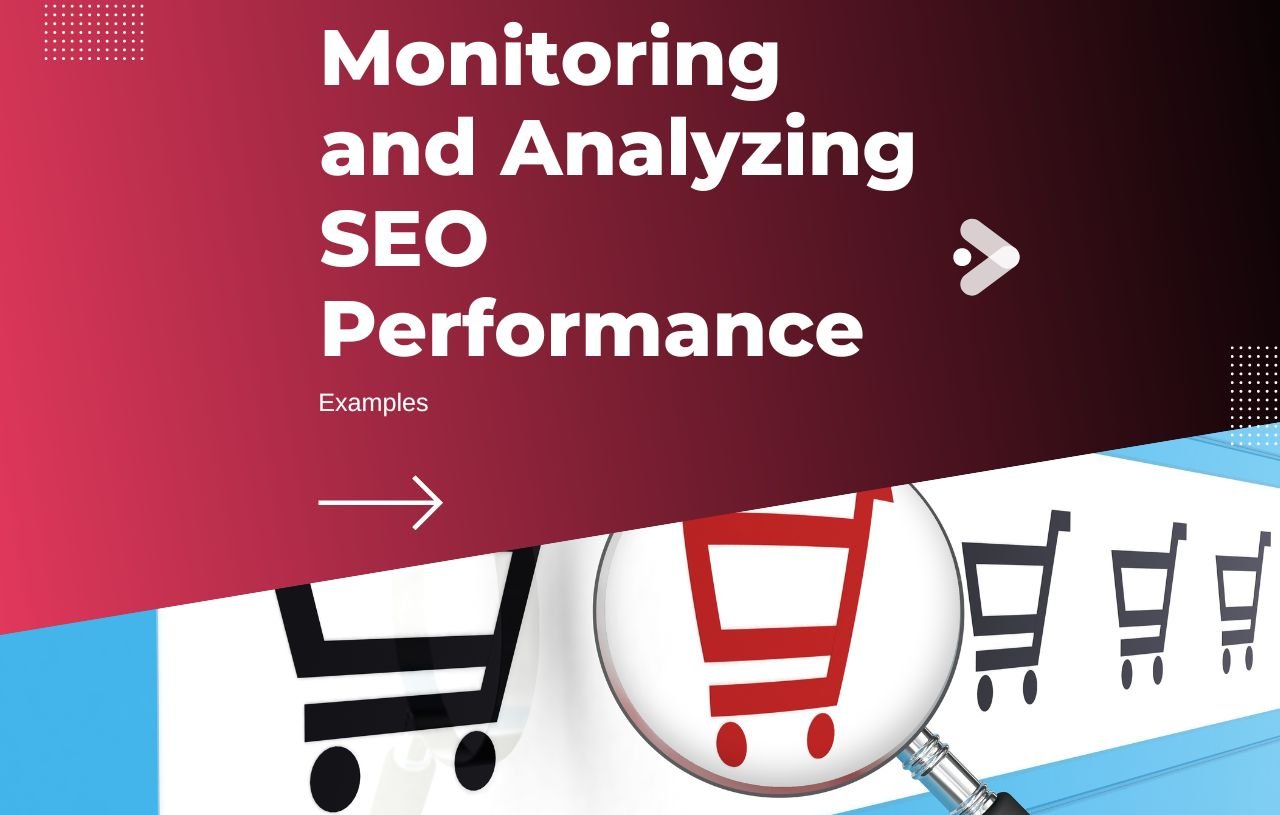
Monitoring and analyzing your SEO performance is crucial to the ongoing success of your e-commerce website. Regularly tracking your SEO efforts allows you to understand what’s working, identify areas for improvement, and make informed decisions to optimize your strategy. In this section, we’ll explore the key metrics and tools you should use to monitor and analyze your e-commerce SEO performance, ensuring that your efforts lead to increased visibility, traffic, and sales.
Google Analytics and Search Console
Two of the most powerful tools for monitoring your SEO performance are Google Analytics and Google Search Console. These tools provide comprehensive data that can help you understand how users interact with your site and how well your pages are performing in search results.
-
Google Analytics: Google Analytics offers insights into your site’s traffic, including where your visitors are coming from, which pages they’re viewing, and how they’re engaging with your content. Key metrics to track include:
- Organic Traffic: Monitor the number of visitors arriving at your site through organic search. A steady increase in organic traffic typically indicates that your SEO efforts are paying off.
- Bounce Rate: This metric shows the percentage of visitors who leave your site after viewing just one page. A high bounce rate may indicate that your pages aren’t meeting user expectations or that your site is difficult to navigate.
- Conversion Rate: Track the percentage of visitors who complete a desired action, such as making a purchase or signing up for a newsletter. Understanding your conversion rate helps you assess how effectively your site turns visitors into customers.
-
Google Search Console: Google Search Console provides valuable data about how your site is performing in Google search results. Important metrics and features include:
- Search Performance: Analyze which keywords are driving traffic to your site, as well as your average position in search results. This data can help you identify which keywords to focus on and where there’s room for improvement.
- Index Coverage: Check which pages of your site are indexed by Google and whether there are any issues preventing certain pages from being indexed. Resolving these issues can help ensure all your important pages are visible in search results.
- Mobile Usability: Google Search Console also provides insights into how mobile-friendly your site is. Since mobile usability is a key ranking factor, addressing any issues in this area is crucial for maintaining strong search rankings.
Example: If your e-commerce store specializes in selling handmade jewelry, you might notice through Google Analytics that organic traffic to your product pages has increased over the past month. However, Google Search Console might reveal that certain keywords you’re targeting are underperforming. By adjusting your content and keyword strategy, you can improve your rankings for those keywords and attract even more traffic.
Key Metrics to Track
To effectively monitor your SEO performance, it’s important to track a range of key metrics that provide insights into various aspects of your site’s health and success.
- Organic Traffic: This is one of the most direct indicators of your SEO success. An increase in organic traffic means more users are finding your site through search engines, which should correlate with higher visibility and better rankings.
- Keyword Rankings: Regularly monitor how your targeted keywords are ranking in search results. Use tools like Ahrefs, SEMrush, or Moz to track your rankings over time. Improving your position for high-value keywords can lead to more traffic and sales.
- Backlinks: Track the number and quality of backlinks pointing to your site. High-quality backlinks from reputable sites are a strong signal to search engines that your content is valuable, helping to improve your rankings.
- Conversion Rate: Monitoring your conversion rate helps you understand how effectively your site is turning visitors into customers. If your traffic is increasing but conversions are not, it may be time to optimize your product pages or checkout process.
- Average Order Value (AOV): This metric measures the average amount spent each time a customer places an order on your site. Increasing your AOV can boost your revenue without necessarily increasing traffic.
Example: Suppose your e-commerce site sells organic skincare products. By tracking keyword rankings, you discover that your blog posts about "organic skincare routines" are driving significant traffic, but the conversion rate on related product pages is low. You might decide to optimize those product pages by enhancing the descriptions, adding customer testimonials, or offering a discount for first-time buyers.
Continuous Optimization
SEO is not a one-time task; it’s an ongoing process that requires continuous optimization and adjustment based on performance data. Regularly reviewing your metrics and making data-driven decisions ensures that your SEO strategy remains effective in the face of changing algorithms and market conditions.
- A/B Testing: Use A/B testing to experiment with different elements of your site, such as product page layouts, call-to-action buttons, or meta descriptions. Testing allows you to identify what changes improve user engagement and conversion rates.
- Content Updates: Regularly update your content to keep it fresh and relevant. This includes revisiting older blog posts, product descriptions, and landing pages to add new information, update keywords, or improve readability.
- Competitor Analysis: Keep an eye on your competitors’ SEO strategies. Tools like Ahrefs and SEMrush can help you analyze their backlinks, content, and keyword strategies. Understanding what your competitors are doing well can provide insights into opportunities for your own site.
- Adapting to Algorithm Changes: Search engine algorithms are constantly evolving, and what worked well last year may not be as effective today. Stay informed about algorithm updates and adjust your SEO strategy accordingly to maintain your rankings.
Example: Imagine your online store sells home office furniture, and you’ve noticed that your competitors are gaining ground with content focused on "ergonomic home office setups." To stay competitive, you might decide to create a series of blog posts and product guides that focus on ergonomics, while also optimizing your product pages with keywords related to ergonomic furniture.
Monitoring and analyzing your SEO performance is essential for ensuring that your e-commerce site continues to grow and thrive. By regularly tracking key metrics, using tools like Google Analytics and Search Console, and committing to continuous optimization, you can make informed decisions that drive more traffic, improve your search engine rankings, and increase sales. Remember, SEO is an ongoing process—staying proactive and adaptable is the key to long-term success in the competitive world of e-commerce.
E-Commerce SEO in 2025: What’s New
SGE Optimization for Product Pages
Google’s Search Generative Experience (SGE) now summarizes product comparisons, reviews, and specs directly in search results.
How to optimize:
- Use structured data for Product, Review, and FAQ schema.
- Include clear, concise product summaries and comparison tables.
- Add AI-friendly content like “Best for…” or “Top-rated by…”
Example: A tech store selling headphones includes a comparison table with battery life, noise cancellation, and price—making it eligible for SGE summaries.
AI-Powered Personalization Signals
Google now considers personalization signals like user behavior, preferences, and past purchases.
How to optimize:
- Use dynamic content that adapts to user segments (e.g., returning vs. new visitors).
- Create intent-based landing pages (e.g., “Best gifts under €50” or “Eco-friendly skincare”).
Example: A beauty brand shows different homepage banners based on whether the user previously browsed vegan or anti-aging products.
Visual & Voice Search Optimization
With smart devices and AR shopping on the rise, users now search using images and voice.
How to optimize:
- Add descriptive alt text and image schema to all product images.
- Use natural language in product descriptions and FAQs.
- Optimize for Google Lens and voice assistants.
Example: A fashion retailer uses filenames like black-leather-ankle-boots.jpg and includes FAQs like “Are these boots waterproof?”
Sustainability & Ethical Commerce Signals
Consumers and search engines now prioritize eco-conscious brands.
How to optimize:
- Highlight sustainability practices (e.g., carbon-neutral shipping, recyclable packaging).
- Use eco-certification badges and encourage reviews that mention them.
Example: An apparel store includes a “Sustainably Made” badge and a filter for “Organic Cotton” products—boosting both UX and SEO.
AI-Generated Product Q&A and UGC Integration
Google now surfaces user-generated content (UGC) like Q&As, reviews, and community discussions in search results.
How to optimize:
- Add a Q&A section to each product page.
- Encourage customers to leave detailed reviews and answer questions.
- Use schema markup to structure this content.
Example: An electronics store includes a “Customer Q&A” section where users ask about compatibility, and past buyers respond—boosting trust and visibility.
Conclusion
Optimizing your e-commerce site for SEO is a multifaceted process that requires a strategic approach across various aspects of your online presence. From understanding the nuances of e-commerce SEO and conducting thorough keyword research to refining your on-page and technical SEO, leveraging content marketing, and implementing effective off-page strategies, each element plays a critical role in enhancing your site's visibility, attracting targeted traffic, and ultimately driving sales.
As the digital landscape continues to evolve, staying proactive with continuous monitoring and optimization is essential. By regularly analyzing your SEO performance through tools like Google Analytics and Search Console, tracking key metrics, and adapting to industry changes, you can ensure that your e-commerce site remains competitive and continues to grow.
In a crowded marketplace, the ability to effectively optimize your online store for search engines not only sets you apart from the competition but also helps you build lasting relationships with customers. By prioritizing SEO, you are investing in the long-term success of your business, ensuring that your products reach the right audience at the right time, and converting visitors into loyal customers. Embrace these strategies, stay informed, and continuously refine your approach to see your e-commerce business thrive in the digital world.

